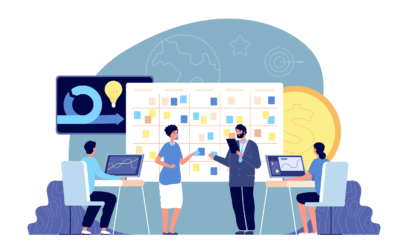There’s no room for error on launch day when implementing Salesforce in your organisation. Without thorough testing and adequate training, you risk facing unexpected challenges that can disrupt operations and hinder user adoption. By prioritising these steps, you empower your team with the knowledge and confidence needed for a smooth transition, ultimately leading to greater success and a more efficient use of your Salesforce investment. Make your launch day a seamless experience that sets the foundation for long-term performance and satisfaction.
Key Takeaways:
- Thorough testing minimises issues during the Salesforce launch.
- Comprehensive training for users enhances adoption and proficiency.
- Clear documentation supports ongoing learning and troubleshooting.
- Feedback loops promote continuous improvement and user satisfaction.
- Collaborative engagement with stakeholders ensures alignment and success.

Mapping Success: The Role of Comprehensive Testing
Comprehensive testing is the backbone of a successful Salesforce implementation. It identifies and resolves potential issues, ensuring that your system operates as intended. By simulating real-world conditions, you can uncover hidden bugs and performance bottlenecks before launch. This proactive approach significantly reduces user frustration and increases confidence in your new system, leading to greater adoption rates post-launch.
Pre-Launch Testing Strategies: From Sandboxes to User Acceptance
Utilising sandboxes for pre-launch testing allows you to create a safe environment for trial runs without affecting your production data. In these sandboxes, you can execute functional tests, performance assessments, and security checks. Implementing User Acceptance Testing (UAT) with select end-users further validates the system from a user perspective, ensuring that features meet business needs and workflows align with user expectations.
Identifying and Mitigating Risks Before Go-Live
Identifying and mitigating risks is vital for a smooth transition to your Salesforce platform. Conduct a thorough risk assessment that includes evaluating user feedback, system performance, and integration points. Deploy monitoring tools to track interactions and potential issues, and develop a contingency plan that outlines steps to address any roadblocks. Training sessions focused on common pitfalls provide your users with the knowledge to navigate obstacles effectively.
Risk mitigation goes beyond initial assessments; it’s an ongoing process. Regular check-ins with your team will help spot issues as they arise. For example, if user feedback reveals confusion around a particular feature, you can adjust training materials or reconfigure settings before launch. Ensuring that your users are well-prepared not only enhances their confidence but also minimises operational disruptions once the system goes live. Additionally, consider scheduling staged rollouts to test environments gradually, allowing for adjustments based on real-world interactions before full implementation.
Empowering Users: Effective Training Methodologies
Training empowers users to navigate Salesforce confidently, leading to increased adoption and productivity. Focused methodologies enhance learning experiences, incorporating various styles and preferences. Integrating hands-on workshops, e-learning modules, and on-demand resources allows you to engage learners and ensure they grasp vital functionalities. Tailoring the training process to meet user needs directly correlates with successful utilisation of the platform.
Tailoring the Training Experience to Diverse User Needs
Every user brings unique skills and experiences, making it vital to customise training accordingly. Assessing skill levels, roles, and learning styles enables you to create targeted content that resonates. Grouping users by similar needs allows for a more engaging and relevant training experience, ensuring everyone feels equipped to utilise Salesforce’s features effectively.
Engaging Techniques for Retention and Application
Employing engaging training techniques significantly impacts user retention and application of learned concepts. Interactive sessions that incorporate real-life scenarios, gamification, and peer collaboration foster an environment where participants can actively practice skills. This hands-on approach not only aids retention but also builds confidence as users apply their knowledge to solve real business challenges.
Interactive training sessions, such as role-playing and scenario-based learning, allow users to practice what they’ve learned in a safe environment. Gamification techniques—like leaderboards or rewards for completion—can spark enthusiasm and competitive spirit among participants. Incorporating ongoing feedback is vital; providing quizzes and assessments ensures users understand key functionalities. Utilising technology, such as simulations, can deepen comprehension, creating an engaging and memorable learning experience that directly translates into improved application in their day-to-day tasks.
Feedback Loops: Continuous Improvement Post-Launch
Establishing effective feedback loops is important for adapting and improving your Salesforce implementation long after launch. By continuously gathering insights from users, you can identify pain points and facilitate targeted enhancements. This iterative process not only bolsters user satisfaction but also ensures your Salesforce instance evolves with your business needs, fostering a culture of ongoing improvement.
Implementing a Structured Feedback Mechanism
A structured feedback mechanism allows you to systematically collect input from users. Utilise surveys, regular check-ins, and focus groups to gauge user sentiment and identify specific areas for improvement. Setting up a dedicated platform, such as a feedback portal, enables users to share their experiences and suggestions consistently, creating a transparent line of communication.
Analysing Usage Data for Ongoing Enhancement
Analysing usage data reveals how effectively users are engaging with Salesforce tools. Investigate patterns such as feature adoption rates and task completion times. This data provides insights into training needs and highlights features that may require enhancement or simplification.
Diving deeper into usage data, consider metrics like login frequency and the duration of user sessions. For instance, if certain functionalities show low engagement, further investigation is warranted. You might discover the need for additional training sessions or clearer user guidance. Deploying analytics tools allows you to track user interactions and behaviours, enabling targeted interventions that enhance the overall user experience and optimise platform utilisation. Aligning these insights with your business objectives ensures that your Salesforce implementation continually meets the evolving demands of your organisation.
Case for Collaboration: Building a Cross-Functional Team
Establishing a cross-functional team empowers your organisation to harness diverse expertise, ensuring a rounded approach to Salesforce implementation. Bringing together members from sales, marketing, IT, and customer support not only enhances communication but also streamlines decision-making. Each department provides unique insights that help tailor Salesforce to meet collective goals, facilitating smoother transitions and minimising disruptions on launch day.
The Importance of Stakeholder Buy-In and Involvement
Engagement from stakeholders is fundamental for successful Salesforce adoption. Without their buy-in, you risk alienating key users who could influence overall effectiveness. Actively involving stakeholders in discussions and decision-making creates a sense of ownership, encouraging them to embrace the new system rather than resist it. This collaborative spirit boosts morale and enhances the likelihood of user adoption on launch day.
Cross-Departmental Collaboration: Bridging Knowledge Gaps
Failure to foster collaboration across departments often results in missed opportunities and fragmented implementations. By encouraging teamwork, you can address knowledge gaps effectively. For instance, a sales rep may highlight a feature that marketing overlooks, enabling you to customise Salesforce to better support lead management and conversion strategies—areas where clear communication directly impacts revenue.
Building effective cross-departmental collaboration involves regular touchpoints that prioritise shared objectives. You might implement joint training sessions where departments can discuss specific challenges they face with Salesforce. For example, if the support team identifies common customer enquiries, insights can be shared with sales to emphasise which products need better education and support. This ongoing dialogue ensures all departments work towards unified goals, leading to a more comprehensive and effective use of the Salesforce platform on launch day and beyond.
Future-Proofing Your Salesforce Implementation
Future-proofing your Salesforce implementation involves anticipating changes and evolving business needs. Staying updated with Salesforce’s dynamic ecosystem ensures that you can leverage the latest capabilities and maintain alignment with your organisational goals. Adopting a proactive approach to scalability and adaptability means you can integrate new functionalities without disruption, driving ongoing success.
Preparing for Updates and New Features
Salesforce frequently rolls out updates and new features, necessitating your readiness to embrace these changes. Staying informed about upcoming releases, utilising Salesforce release notes, and participating in webinars can enhance your understanding and application of new tools. Implementing these updates effectively allows your team to maximise system capabilities and improve overall performance.
Cultivating a Growth Mindset for Continuous Learning
A growth mindset fosters an environment where you and your team embrace learning as an ongoing journey. When you encourage curiosity and experimentation, you enable innovation in how Salesforce is utilised across your organisation. Engaging in regular training sessions and leveraging community resources creates a culture that values development, positioning your team for long-term success.
Cultivating a growth mindset is not just about formal training; it’s about instilling a culture of curiosity where mistakes are seen as learning opportunities. Encourage your team to share insights from challenges faced while using Salesforce, which drives collective learning. Start initiatives such as lunch-and-learn sessions or Salesforce user groups within your company. As a result, your team members will become more resourceful, adaptable, and confident in their ability to tackle new challenges, ultimately leading to a more agile organisation ready for the future.
To wrap up
The path to a successful Salesforce launch starts with comprehensive testing and targeted training. By thoroughly vetting your system and equipping your team with the necessary skills, you can eliminate unexpected challenges on launch day. This proactive approach ensures that you are well-prepared, fostering confidence among users and setting the stage for long-term success with Salesforce. Ultimately, your efforts in preparation will pay dividends, allowing you to fully leverage the platform’s potential without any surprises.
FAQ
Q: What is meant by ‘No Surprises on Launch Day’ in the context of Salesforce?
A: ‘No Surprises on Launch Day’ refers to the preparedness and confidence achieved through thorough testing and training before deploying Salesforce. It ensures all functionalities work as expected and users are ready to utilise the system effectively.
Q: How can proper testing influence the success of a Salesforce implementation?
A: Proper testing identifies potential issues and functionality gaps in the Salesforce setup, allowing for timely resolutions. This proactive approach enhances user experience and ensures that the system meets business requirements upon launch.
Q: What types of training are recommended for Salesforce users before launch?
A: Recommended training types include hands-on workshops, guided tutorials, and user-specific sessions tailored to different roles within the organisation. This diverse training approach helps users understand their specific functionalities and boosts overall adoption.
Q: What role does user feedback play in the testing phase of Salesforce?
A: User feedback during the testing phase is vital for identifying real-world issues that may not surface through automated testing. Gathering insights from end-users can refine workflows and enhance system usability before the launch.
Q: How can organisations maintain success after the initial launch of Salesforce?
A: Organisations can maintain success by offering continuous support, regular training updates, and ongoing assessment of user feedback. Implementing a change management process ensures the system evolves with user needs and business dynamics.






